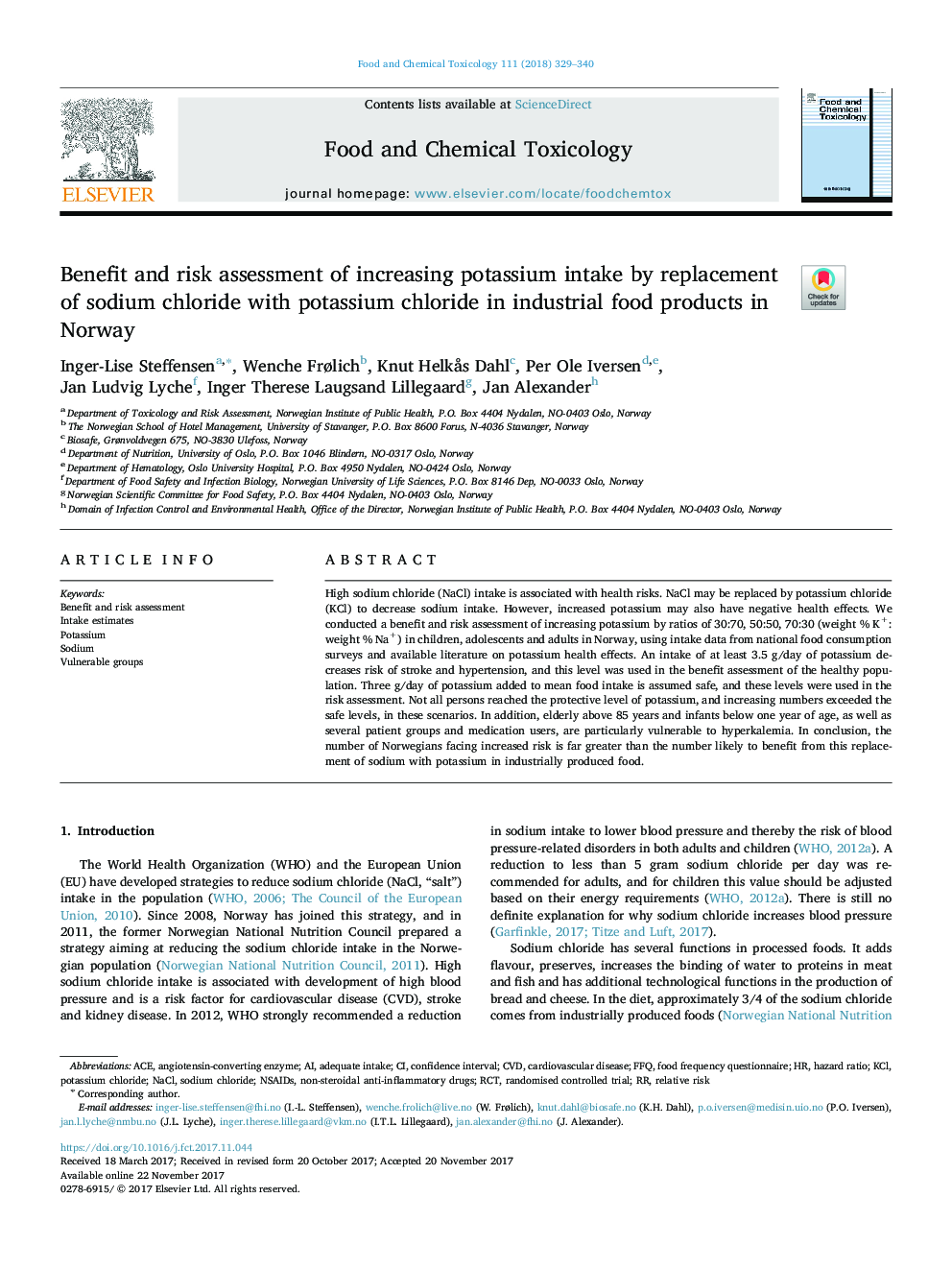| Article ID | Journal | Published Year | Pages | File Type |
|---|---|---|---|---|
| 8548531 | Food and Chemical Toxicology | 2018 | 12 Pages |
Abstract
High sodium chloride (NaCl) intake is associated with health risks. NaCl may be replaced by potassium chloride (KCl) to decrease sodium intake. However, increased potassium may also have negative health effects. We conducted a benefit and risk assessment of increasing potassium by ratios of 30:70, 50:50, 70:30 (weight % K+: weight % Na+) in children, adolescents and adults in Norway, using intake data from national food consumption surveys and available literature on potassium health effects. An intake of at least 3.5Â g/day of potassium decreases risk of stroke and hypertension, and this level was used in the benefit assessment of the healthy population. Three g/day of potassium added to mean food intake is assumed safe, and these levels were used in the risk assessment. Not all persons reached the protective level of potassium, and increasing numbers exceeded the safe levels, in these scenarios. In addition, elderly above 85 years and infants below one year of age, as well as several patient groups and medication users, are particularly vulnerable to hyperkalemia. In conclusion, the number of Norwegians facing increased risk is far greater than the number likely to benefit from this replacement of sodium with potassium in industrially produced food.
Keywords
Related Topics
Life Sciences
Agricultural and Biological Sciences
Food Science
Authors
Inger-Lise Steffensen, Wenche Frølich, Knut Helkås Dahl, Per Ole Iversen, Jan Ludvig Lyche, Inger Therese Laugsand Lillegaard, Jan Alexander,
